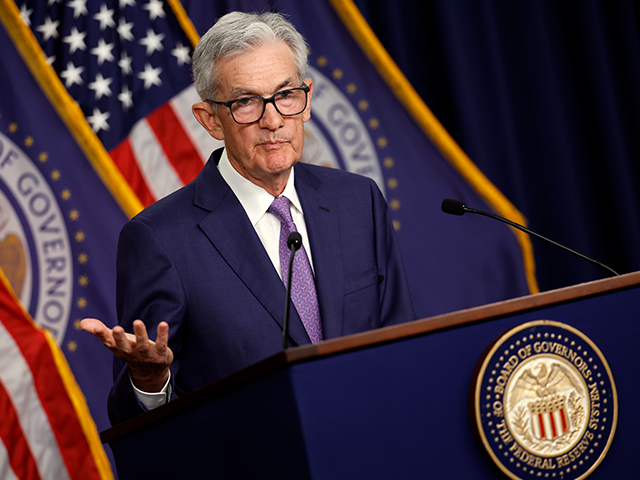Higher for Longer and Higher Forever
The Fed has finally come around to the idea that interest rates are very likely to be higher for as far as the eye can see.
Wall Street was expecting the Federal Reserve’s Summary of Economic Projections to indicate officials now expect two cuts instead of the three they’ve been forecasting since the end of last year. Fed officials went further by bringing the median expected benchmark rate up to 5.1 for year-end, implying just one cut this year.
More importantly, Fed officials significantly raised their expectations for interest rates over the longer run. The median expected federal funds was on a downward trend until it hit 2.5 percent in the summer of 2019. For years after that, it seemed locked in place despite serious gyrations in the economy. It dipped once to 2.4 percent in the summer of 2022 but never climbed.
That changed in March, when the projections showed the median longer run expectation rose to 2.6 percent. In the latest set of projections, this jumped all the way up to 2.8 percent.
This is a clear indication that the Fed understands—and wants markets to understand—that the path of interest rates has shifted upward. We’re in an economy with much stronger inflationary pressures, and the interest rates required to keep inflation tame will necessarily be higher.
Not So Immaculate Disinflation
Americans finally got some relief from inflation in May, providing some hope that the surge in inflation seen in the first few months of this year might have been, well, transitory. Unfortunately, this may be the result of consumer exhaustion with high prices and weak real income growth.
The consumer price index (CPI) was flat for the month. To see any inflation at all in the broad index of prices paid by households, you have to go all the way out to three digits beyond the decimal point to see the 0.006 percent increase. (Truly unrounded, the index rose 0.00575 percent).
Expectations were for a soft inflation report, but this was even softer than forecast. It is also the third consecutive monthly decline for CPI. The annualized rate over the past three months declined to 2.8 percent from 4.6 percent in April, highlighting that the trend in inflation is headed in the right direction.
Core prices rose 0.2 percent for the month, or 0.163 percent before rounding. That was also better than the 0.3 percent expected. This annualizes to two percent. The three-month annualized rate fell to 3.3 percent from 4.1 percent.
The index for core services, which excludes energy services, rose by 0.2 percent, a significant decline from the 0.4 percent recorded in April and the smallest increase all year.
Core services excluding housing, the so-called “super core” metric that Fed officials have said they watch closely, was flat for the month, much lower than the 0.4 percent increase expected. Three month annualized super core inflation fell to 4.5 percent from 6.8 percent. The six month annualized super core rate, which has been mentioned as a relevant metric by Powell, fell to 5.4 percent from 6.8 percent a month ago.
The softer-than-expected CPI figures are likely related to the weak retail sales figures we saw in April. According to the data, retail sales in April showed a significant slowdown after a strong performance in March. The decline was broad-based, with notable drops in sales at furniture stores, electronics and appliance stores, and online retailers. This suggests that consumers pulled back on spending, possibly due to concerns about inflation and higher interest rates impacting their purchasing power. When consumers tighten their belts, businesses often respond by slowing price increases or even reducing prices to stimulate demand.
The evidence for this connection can be seen in some of the details of the reports. Sales at furniture stores fell by 0.5 percent in April, and prices of home furnishings were flat in May. Sales at auto dealers declined 0.8 percent, and new car prices declined 0.3 percent. Sales growth at clothing stores fell from 2.7 percent in March to 1.6 percent, and apparel prices fell 0.3 percent. Sales in hobby, sporting goods, musical instrument, and book stores fell 0.9 percent. Prices of “recreational commodities” fell 0.1 percent.
The connection between weaker CPI figures and April’s retail sales data underscores the fragility of what has been somewhat immaculate disinflation. If progress on inflation now requires declining or weaker sales, a hard-landing scenario becomes more likely.

COMMENTS
Please let us know if you're having issues with commenting.